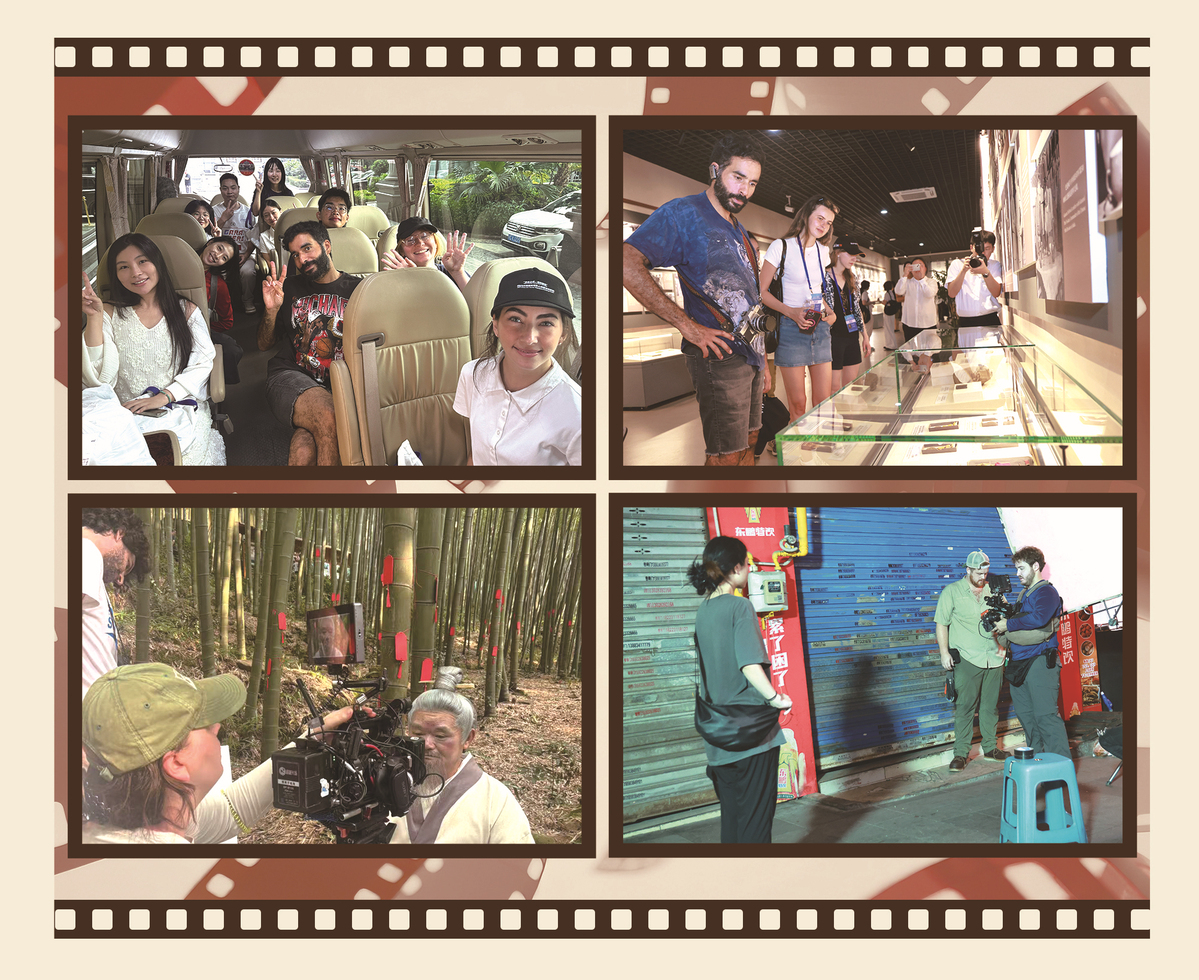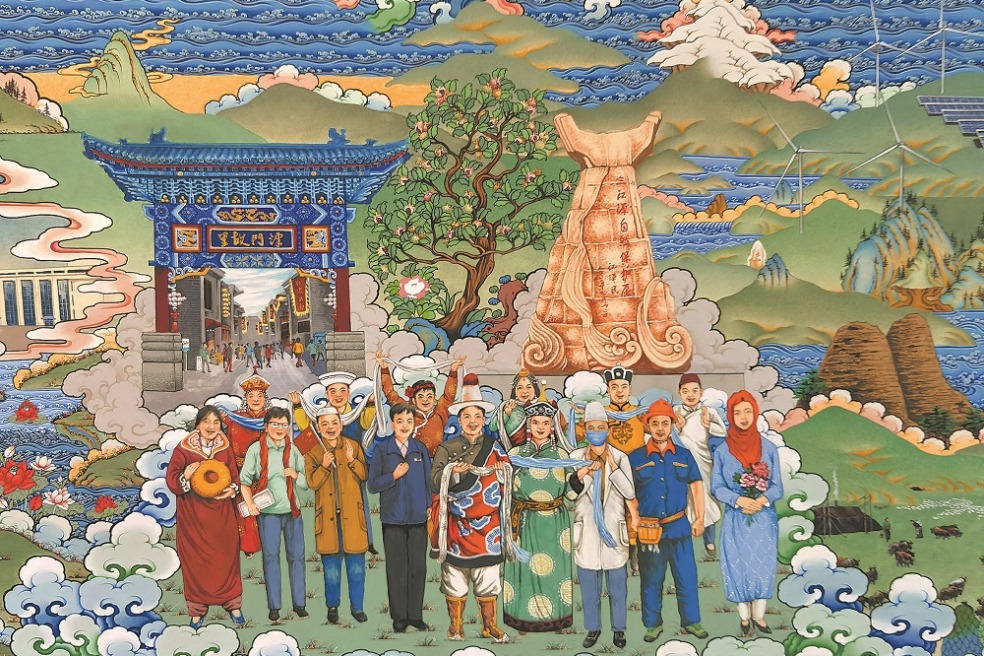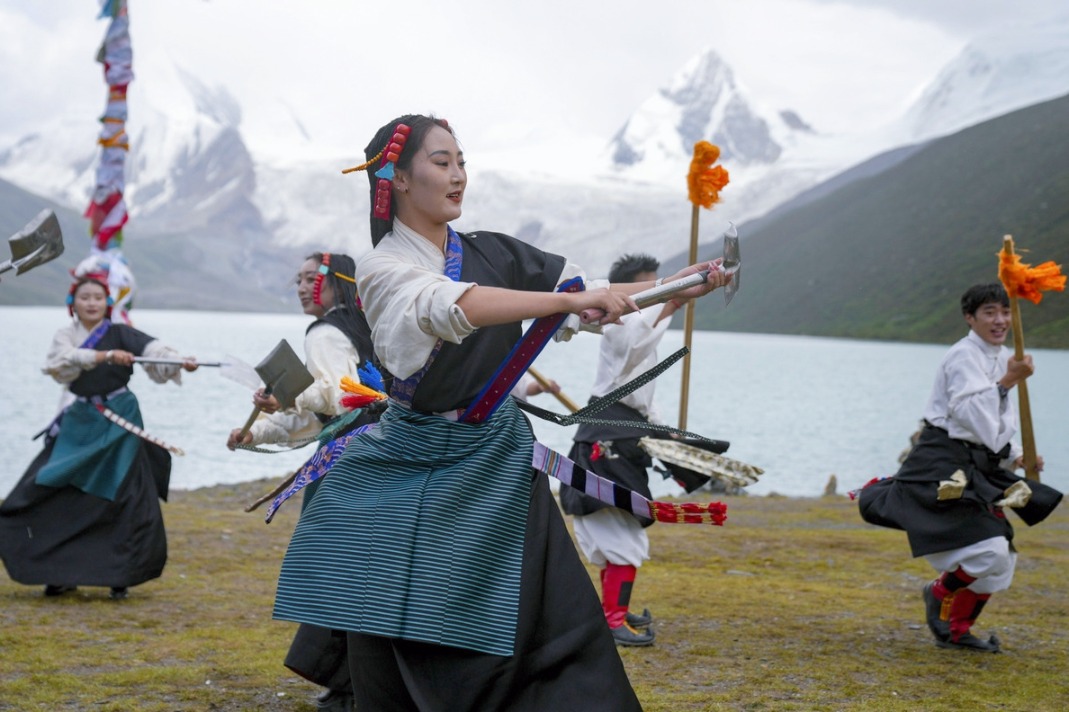Reel dialogues across cultures
In a weeklong program, students from top film schools in China and the US collaborate to produce cross-cultural stories in Chongqing.


This year marks the 80th anniversary of the victory in the Chinese People's War of Resistance Against Japanese Aggression (1931-45) and the global triumph in the World Anti-Fascist War.
During this period, Chongqing in Southwest China served as the wartime capital of the Chinese government and a command center in the Far East, playing a vital role in the international fight against fascism.
To commemorate this shared history, young filmmakers from China and the United States teamed up for a unique challenge: to collaboratively produce original short films within just three days in Chongqing.
The "72-Hour Film Challenge "brought together 30 young filmmakers — 15 from each country — including film students from New York University, the American Film Institute, the University of North Carolina School of the Arts, Chapman University, and Chongqing University. They were joined by emerging directors, producers, cinematographers, and actors.
Notably, 13 of the 15 US participants were visiting China for the first time.
On July 11, their short films were screened at a special event in Yongchuan district, Chongqing, which also featured a dialogue session between the young filmmakers from both countries.
The challenge was part of the "Bridge of the Future" China-US Youth Exchange, held from July 4 to 11.
Participants were randomly assigned to five teams, labeled A through E. Each team explored over 20 filming locations — from urban alleyways and museums to scenic spots in the Yongchuan and Wulong districts — gathering inspiration and footage to bring their stories to life.
"The more you go out into the world, the more people you engage with, the more places you go to, the more empathetic you become — and the more you understand that, at the end of the day, we're all the same. We're all human," said Katie Mlinek from the US.
"Even though it might be in a different language in a different city, we're all trying to make the same sort of art. So being able to do that together is a beautiful thing."
"We will show the world a real, multi-dimensional, and vibrant Chongqing, hoping that these stories and images will foster new means of communication between China and the US," said Ge Yuzhong, an independent producer based in Los Angeles.
Legacy in focus
Ge's Group B produced Remember in the Future, a poetic meditation on the relationship between humans and nature.
The film follows a woman sleepwalking through the city, discovering her inner voice and reconnecting with the natural world, all set against Chongqing's striking landscapes.
Group D's film To Move Again draws inspiration from the wartime alliance between China and the US. It tells the story of a museum curator struggling with a creative block who finds hope and renewed purpose through his connection to history.
The film is centered around the Chongqing Stilwell Museum — dedicated to General Joseph Stilwell (1883-1946), a US Army general who played a key role in coordinating Chinese and US efforts during World War II.
"Learning has always been a part of love," said Daniel Mistir, a screenwriting major about to graduate from the American Film Institute Conservatory in Los Angeles. "I've learned and love so much about this place, and I understand what made General Stilwell love Chongqing."
Located in Yuzhong district, the museum honors Stilwell's legacy and the collaboration between the two nations during the war, serving as a powerful symbol of shared memory and solidarity.
In 1941, a group of volunteer US pilots — later known as the Flying Tigers — came to China, standing shoulder to shoulder with the Chinese people in the fight against the invading Japanese troops.
In 1942, their headquarters were moved from Kunming, Yunnan province, to Chongqing to help defend the airspace and safeguard the wartime capital, which was under constant bombardment.
"I think there's a lot we can take from that time and apply to today," said Matthew "Rove" Roveto, a filmmaker from Boston, and the cinematographer for Mistir's team. "Obviously, things in the world are very difficult right now, and what's been nice to see about this event is that it's about connecting — it's about exchanging."
"Our film began with a spark of inspiration," said Jiang Binghaoyue, producer of The Path to Enlightenment and a postgraduate student in broadcasting and television at the Meishi Film Academy, Chongqing University. "Our Group C director, Blaine Isreal, wanted to craft a surreal epic rooted in the spirit of Eastern martial arts."
To bring that vision to life, the team wove elements of traditional Chinese culture throughout the film — from costumes and props to set design and music. The result was a creative atmosphere rich in mysticism, poetic imagery, and otherworldly perspectives.
Jiang said she was deeply impressed by the US team members' professionalism and dedication. Director Isreal continued shooting despite suffering more than 100 mosquito bites in the bamboo forest of Yongchuan. Cinematographer Bethany Michalski knelt for long periods to capture the perfect angle, and producer Rachel Armiger demonstrated exceptional skill throughout the production.
"These works not only showcase how young people from both countries see and interpret the world but also reflect their mutual respect and appreciation for each other's cultures," said Han Qiuping, chief director of the 72-Hour Film Challenge and founder of Bombax Films.
At the closing ceremony, all participating young filmmakers received Friendship Commemoratives in recognition of their contributions.
The exchange event also included city tours through the Yuzhong and Shapingba districts, as well as the Liangjiang New Area, offering further opportunities for cultural discovery and connection.
Luo Ruichen contributed to this story.
Contact the writers at dengrui@chinadaily.com.cn
Today's Top News
- Rise of macro-regions and dollar's decline
- Training helps to empower Global South
- Country to cut costs of preschool education
- Pakistani minister hails high-tech ties with China
- China-US trade ties key for world economy
- Prospering Xizang sees surge in overseas visitors































